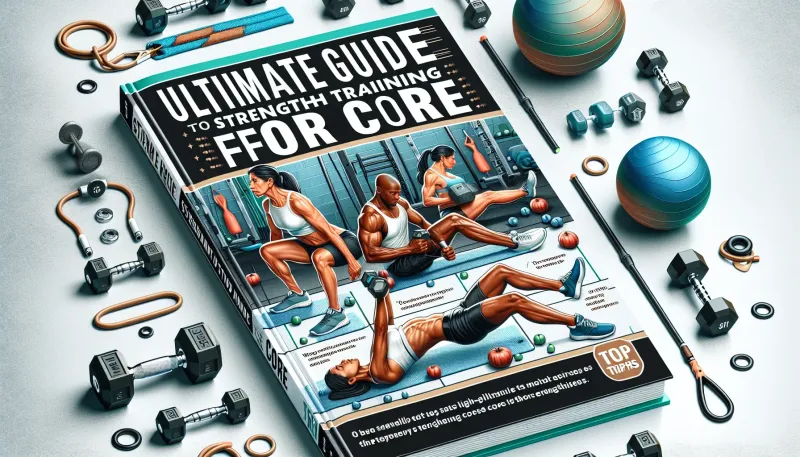Ultimate Guide to Strength Training for Core: Top Exercises and Tips

Discover the ultimate guide to strength training for core with effective exercises and expert tips to build a stronger, more resilient midsection.
Strength training for core muscles is essential for overall fitness, stability, and performance in various activities. Whether you're looking to improve your athletic performance, alleviate back pain, or simply enhance your physical appearance, having a strong core is imperative. This guide delves into the top exercises and expert tips to help you build a resilient core effectively.
What is the Core and Why Is It Important?
The core includes the muscles of your abdomen, lower back, hips, and pelvis. These muscles work together to stabilize your spine and pelvis. A strong core contributes to better posture, reduces the risk of injuries, and improves balance and stability during both everyday activities and physical exercises.
Benefits of Core Strength Training
Engaging in strength training for core offers numerous advantages, including:
- Improved Posture: A strong core helps maintain proper alignment of the spine, reducing fatigue and discomfort.
- Enhanced Athletic Performance: A stable core allows for more efficient transfer of power during movements such as running, jumping, and lifting.
- Reduced Back Pain: Strengthening the muscles around your spine can alleviate chronic lower back pain.
- Better Balance and Stability: A strong core helps in maintaining equilibrium, especially during dynamic movements.
Top Core Strengthening Exercises
Below, we outline some of the most effective exercises for building core strength. Incorporate these into your workout regimen for optimal results.
1. Plank
The plank is a fundamental exercise that works multiple core muscles simultaneously.
- How to Do It: Start in a forearm plank position with elbows directly beneath shoulders and legs extended. Keep your body in a straight line from head to heels. Hold this position for as long as possible while maintaining proper form.
- Benefits: Improves endurance and stability while engaging several core muscles.
2. Russian Twists
Russian twists target the obliques and help in improving rotational strength.
- How to Do It: Sit on the floor with knees bent and feet off the ground. Lean back slightly and hold your hands together at your chest. Twist your torso to the right, bringing your hands beside your right hip, then twist to the left. Repeat.
- Benefits: Enhances rotational movement and targets the muscles along the side of your abdomen.
3. Leg Raises
Leg raises effectively target the lower abdominal muscles.
- How to Do It: Lie flat on your back with legs extended. Place your hands beneath your hips for support. Raise your legs towards the ceiling until they're perpendicular to the floor. Lower them back down without touching the ground. Repeat.
- Benefits: Strengthens the lower core muscles and improves flexibility.
4. Bicycle Crunches
Bicycle crunches are excellent for working the entire core, especially the obliques.
- How to Do It: Lie on your back with hands behind your head and legs lifted to a tabletop position. Bring your right elbow to meet your left knee while extending the right leg. Switch sides, bringing your left elbow to your right knee. Repeat in a pedaling motion.
- Benefits: Engages multiple core muscles and enhances coordination.
5. Dead Bug
The dead bug exercise is great for building core stability and coordination.
- How to Do It: Lie on your back with arms extended towards the ceiling and knees bent at 90 degrees. Slowly lower your right arm and left leg towards the floor while keeping your back flat. Return to the starting position and switch sides. Repeat.
- Benefits: Promotes core stability and prevents lower back strain.
6. Mountain Climbers
Mountain climbers are a dynamic exercise that targets the core while providing a cardiovascular challenge.
- How to Do It: Start in a high plank position with arms straight and hands shoulder-width apart. Bring your right knee towards your chest, then switch legs quickly, bringing the left knee towards your chest. Continue alternating quickly.
- Benefits: Combines core strengthening with aerobic endurance.
Tips for Effective Core Strength Training
To maximize the effectiveness of your core workouts, consider the following expert tips:
- Consistency is Key: Regular practice yields the best results. Aim to incorporate core exercises into your routine at least 3-4 times a week.
- Focus on Form: Proper technique is crucial to prevent injuries and ensure muscle activation. Quality over quantity.
- Incorporate Variety: Utilize a mix of different exercises to target various core muscles and prevent boredom.
- Combine with Other Training: Pair core workouts with full-body strength training and cardiovascular activities for overall fitness.
- Prioritize Progression: Gradually increase the intensity and duration of your exercises to continually challenge your muscles.
- Listen to Your Body: Pay attention to how your body feels and avoid overtraining, which can lead to injuries.
- Stay Engaged: Keep your core engaged during other exercises and daily activities to build functional strength.
Conclusion
Strength training for core is essential for maintaining stability, enhancing athletic performance, and reducing the risk of injuries. By incorporating the exercises and tips outlined in this guide into your fitness regimen, you can build a powerful and resilient core. Remember to stay consistent, focus on correct form, and listen to your body to achieve the best results. Start today and embark on the journey to a stronger, healthier you!



























